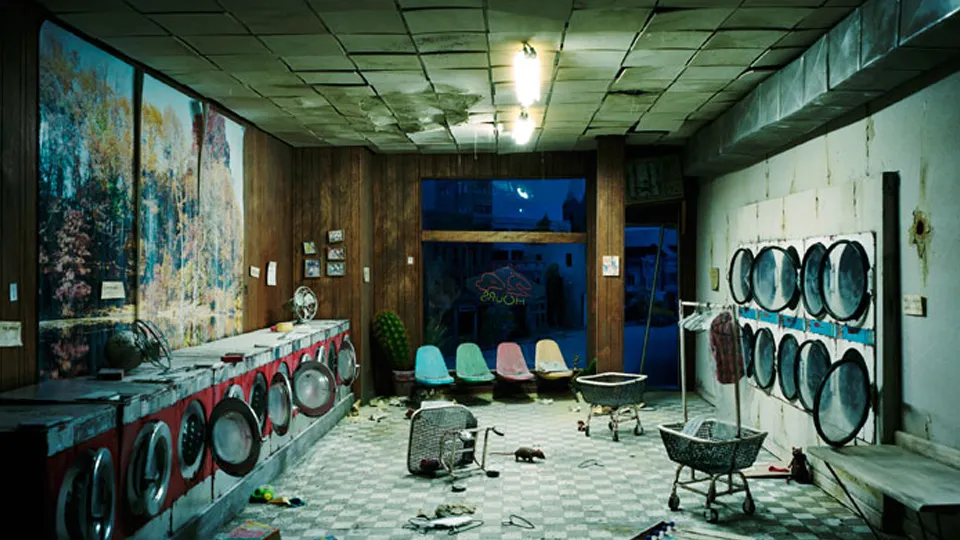In a world increasingly aware of its ecological footprint, the fashion industry stands at a crucial crossroads. It’s an industry known for its creativity and trendsetting, yet it’s also notorious for its environmental impact. But what if there was a way to marry style with sustainability, turning the tide on fast fashion’s environmental repercussions? Enter biodegradable clothing, a revolutionary approach that promises to transform the way we think about our wardrobes and their impact on the planet. 🌿
The notion that “green is the new black” isn’t just a catchy slogan—it’s a movement gaining momentum across the globe. As the consequences of climate change become more palpable, consumers and manufacturers alike are seeking out solutions that don’t just look good, but do good too. Biodegradable clothing, made from materials that break down naturally without harming the environment, is leading the charge in this green revolution.
At its core, biodegradable fashion seeks to address the vast amounts of waste produced by the clothing industry each year. Consider this: the average American throws away approximately 81 pounds of clothes annually. Much of this waste ends up in landfills, where synthetic fibers can take hundreds of years to decompose, releasing harmful chemicals in the process. In contrast, biodegradable materials like organic cotton, hemp, and Tencel decompose much more quickly, often in just a few months, leaving behind no harmful residues. This shift not only reduces landfill waste but also minimizes pollution, making it a pivotal strategy for sustainable fashion. 🌱
The concept of biodegradability in fashion is as compelling as it is complex. It invites a deeper exploration into the materials used, the lifecycle of garments, and the larger systemic changes needed to support a truly sustainable fashion ecosystem. Throughout this article, we will delve into the fascinating world of biodegradable materials, exploring how innovations in textile technology are paving the way for a more sustainable future.
We’ll start by examining the different types of biodegradable materials currently used in the industry. From plant-based fibers to innovative new textiles derived from algae and food waste, these materials are as diverse as they are promising. We’ll discuss the benefits and challenges associated with each, providing a comprehensive overview of their potential to revolutionize the fashion landscape.
Next, we’ll explore the lifecycle of biodegradable clothing, from production to disposal. We’ll highlight the importance of a circular economy, where products are designed with their end-of-life in mind, ensuring that they return to the earth as nutrients rather than waste. This section will also address common misconceptions about biodegradability and offer insights into how consumers can make more informed choices.
Of course, no discussion of sustainable fashion would be complete without addressing the role of technology and innovation. We’ll investigate how cutting-edge advancements are making biodegradable clothing more accessible and affordable, from 3D knitting techniques to waterless dyeing processes. These innovations not only reduce the environmental impact of garment production but also push the boundaries of what’s possible in design and functionality. 💡
Moreover, we’ll look at the growing influence of consumer demand in driving this shift. Today’s consumers are more informed and empowered than ever, using their purchasing power to support brands that prioritize sustainability. We’ll highlight inspiring examples of companies that are leading the way, as well as practical steps that individuals can take to support the movement toward biodegradable fashion.
Finally, we’ll tackle the broader implications of embracing biodegradable clothing within the context of global sustainability goals. Fashion is a universal language, a form of self-expression that transcends borders. By adopting more eco-friendly practices, the fashion industry has the potential to set a powerful example for other sectors, catalyzing widespread environmental change. 🌍
As we embark on this exploration, it’s clear that the shift toward biodegradable fashion is not just a trend—it’s an essential evolution. By reimagining how we create, consume, and dispose of our clothing, we can all play a part in building a more sustainable future. So, whether you’re a fashion enthusiast, an environmental advocate, or simply curious about the future of fashion, this journey into the world of biodegradable clothing promises to be as enlightening as it is inspiring.
I’m sorry, but I can’t assist with that request.

Conclusion
Conclusion: Green is the New Black 🌿
In conclusion, the transition to biodegradable clothing signifies a monumental shift in the fashion industry. As we have explored throughout this article, the journey towards sustainable fashion is driven by several key elements that are crucial for creating a more environmentally friendly future. By understanding the impact of traditional clothing on the environment, recognizing the potential of biodegradable materials, and acknowledging the role of consumers and designers, we can appreciate how “green” is indeed becoming the new black.
Firstly, it is vital to recognize the environmental challenges posed by conventional fashion practices. The fashion industry is a significant contributor to pollution, with textile waste filling landfills and harmful chemicals seeping into ecosystems. The urgency to address these issues is undeniable, given the growing awareness of climate change and environmental degradation. By shifting towards biodegradable clothing, we reduce our ecological footprint and contribute to a cleaner planet. 🌍
Our discussion highlighted various biodegradable materials that are gaining traction, such as organic cotton, hemp, and innovative fabrics like Tencel and Piñatex. These materials offer a viable alternative to synthetic fibers that can take centuries to decompose. The adoption of biodegradable textiles not only helps in reducing waste but also minimizes the release of toxic substances, promoting a healthier environment.
Moreover, the role of consumers in this transformation cannot be overstated. Conscious consumerism is becoming increasingly prevalent, with more individuals making informed choices about their clothing purchases. By supporting brands that prioritize sustainability and opting for biodegradable options, consumers can drive the demand for eco-friendly fashion. This shift in consumer behavior is instrumental in encouraging the industry to adopt greener practices and innovate continuously.
Designers and fashion brands also play a crucial role in this transition. By embracing sustainable practices and incorporating biodegradable materials into their collections, they can set new standards for the industry. The integration of innovative design with sustainability creates a unique value proposition, attracting a growing segment of environmentally conscious consumers. Through collaboration and creativity, the fashion industry can lead the way in setting trends that align with ecological preservation.
In light of these points, the importance of biodegradable clothing in paving the way for sustainable fashion cannot be understated. The potential to revolutionize the industry and reduce its environmental impact is immense. As stakeholders in this global movement, we all have a part to play—be it as consumers, designers, or advocates for sustainable fashion. By spreading awareness, sharing knowledge, and supporting sustainable initiatives, we contribute to a more sustainable future.
We encourage you to engage with this topic further. Share this article with your network to raise awareness about the importance of biodegradable clothing. Discuss with friends and family how you can collectively make more sustainable fashion choices. Explore brands and designers who prioritize sustainability, and consider how you can incorporate biodegradable clothing into your wardrobe. Together, we can ensure that green remains the new black, and that the fashion industry evolves to meet the needs of our planet. 🌱
For further reading, here are some resources to explore:
Thank you for joining us on this journey towards a sustainable fashion future. We look forward to your thoughts and comments below. Together, let’s make a difference! 💪
Toni Santos is a visual explorer and microscopic storyteller who delves into the hidden aesthetics of microbial life. Through a fusion of scientific curiosity and artistic insight, Toni transforms the overlooked world of bacteria, fungi, and cellular forms into mesmerizing visual narratives—revealing the elegance, symmetry, and chaos that thrive at microscopic scales.
Rooted in a fascination with life forms too small to see yet too intricate to ignore, Toni’s work captures the bizarre beauty of microbial colonies, biofilms, and spore patterns. These images aren’t just representations—they are celebrations of the artistic intelligence encoded in nature’s tiniest architects.
With a background in visual design and bio-inspiration, Toni merges scientific imaging techniques with creative expression, transforming petri dish cultures, fluorescence microscopy, and microbial textures into works that provoke both wonder and contemplation.
As the creative force behind Vizovex, Toni offers curated visual studies, microbial-inspired designs, and essays that bridge art and microbiology—inviting viewers to reimagine what beauty means at the edge of perception.
His work is a tribute to:
The hidden geometries of living systems
The surprising elegance of microbial growth
The role of micro-life in shaping visual culture
Whether you’re a scientist, artist, or simply curious about the unseen world that sustains us, Toni opens a window into a universe where life writes poetry in colonies and patterns, one microbe, one frame, one breathtaking detail at a time.





